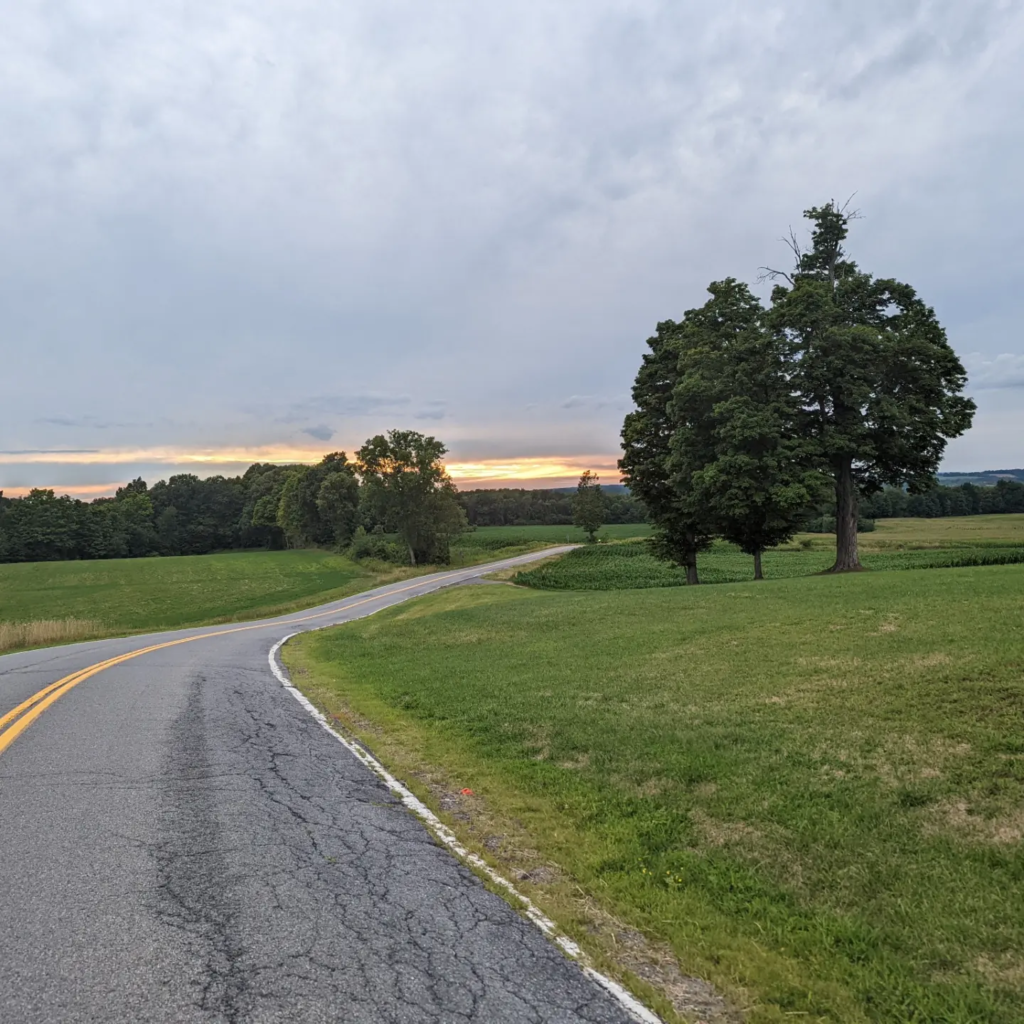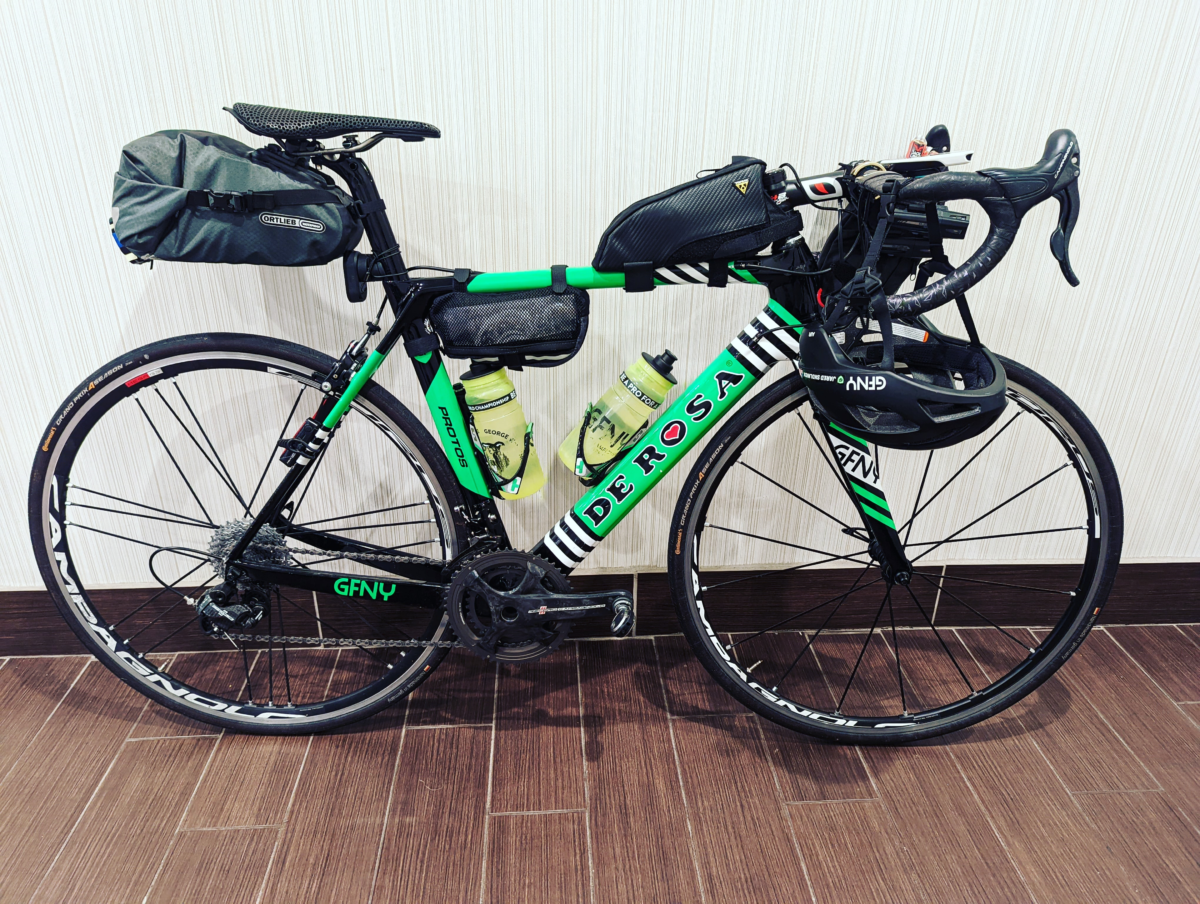Why my 1200k attempt was “death by a thousand cuts” and yet still an amazing adventure.
For the uninitiated, a brevet is a long bike ride in the spirit of Randonneuring. These rides are “self-supported endurance rides” meant to test your mind and body. And while they are self-supported (meaning that each rider needs to take care of their own needs and cannot accept outside assistance) these events are full of social interaction and camaraderie. Aside from “endurance”, I think that “camaraderie” is the most mentioned word in the spirit of Randonneurs. Those that take on these events share a common and unusual bond that is hard to explain but entirely easy to enjoy.
I ride with the NJ Randonneurs and I need to give a specific shoutout to this incredible group. The organizers, riders, and volunteers are all such wonderful people that truly put their hearts into the organization and its events. I’ve made some great new friends through these events. The NY-Montreal-NY 1200k was no exception. Well, perhaps it was an exception because it even exceeded the high expectations that this group has set on its annual brevet events!
In late 2019, I signed up for the NY-Montreal-NY 1200k which was to take place in August 2020. Before training had begun in earnest, COVID forced the event to be postponed until 2021, and then again until 2022. A lot happened in my life during that time, and a lot happened in the world as well. Much of this is what resulted in my DNF, but also allowed me to appreciate and enjoy what I did accomplish on this ride.
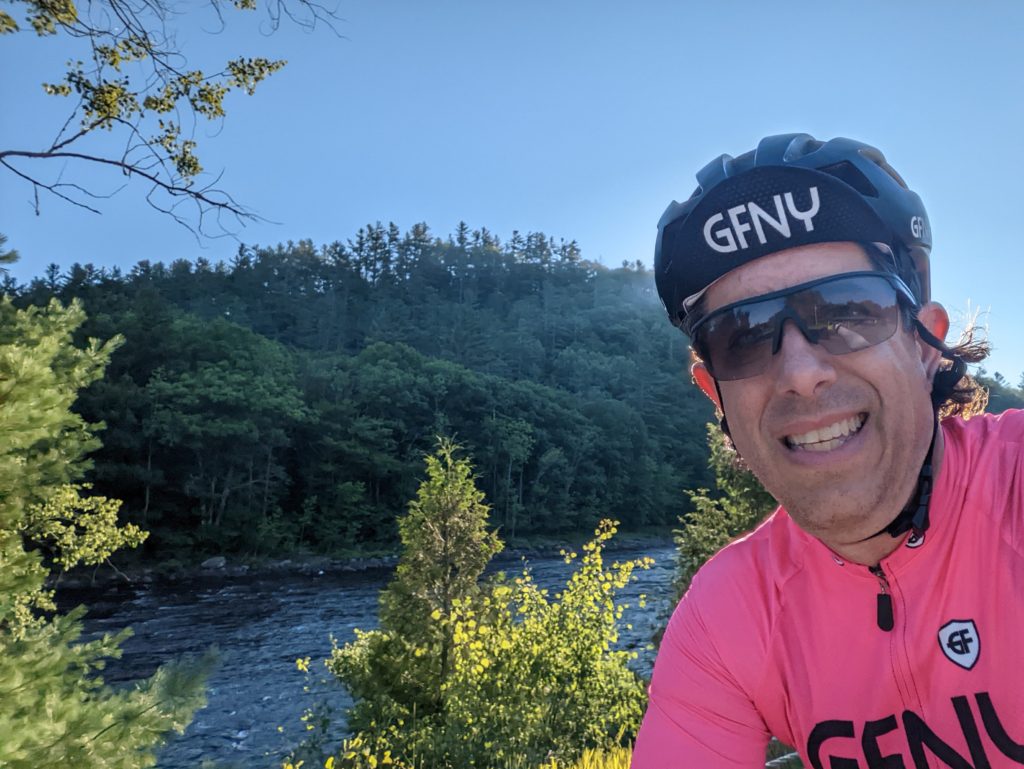
The Prelude
When I signed up for this event I had an FTP of 250w on the indoor trainer. I wasn’t riding with a power meter outdoors, but this should correlate to my overall riding. I was controlling my weight nicely and my successful brevets in 2019 put me squarely “middle of the pack” in terms of total time to complete each event.
In addition to these objective indications that I could take on bigger challenges, there’s what I consider the most important factor in an ultra-endurance event: “mind over body.” By way of example, on a 400k ride, my day will go roughly like this:
- 100k: Lots of discomfort and my body sending messages to stop torturing it
- 200k: My body starts to realize that I will not listen to its messages of discomfort
- 300k: Pain is completely ignored, but pace has slowed due to fatigue
- 400k: I roll into the finish strong with an increased pace for the last segments and a smile on my face
Endurance athletes need to really get in tune with their bodies. “Mind over body” is key to completing these challenges, but it is also important to know which messages cannot be ignored. A simple example for me is that if I feel sleepy during a long ride, I will absolutely stop and take a “dirt nap” or I will likely have decreased situational awareness and that can result in truly dangerous situations.
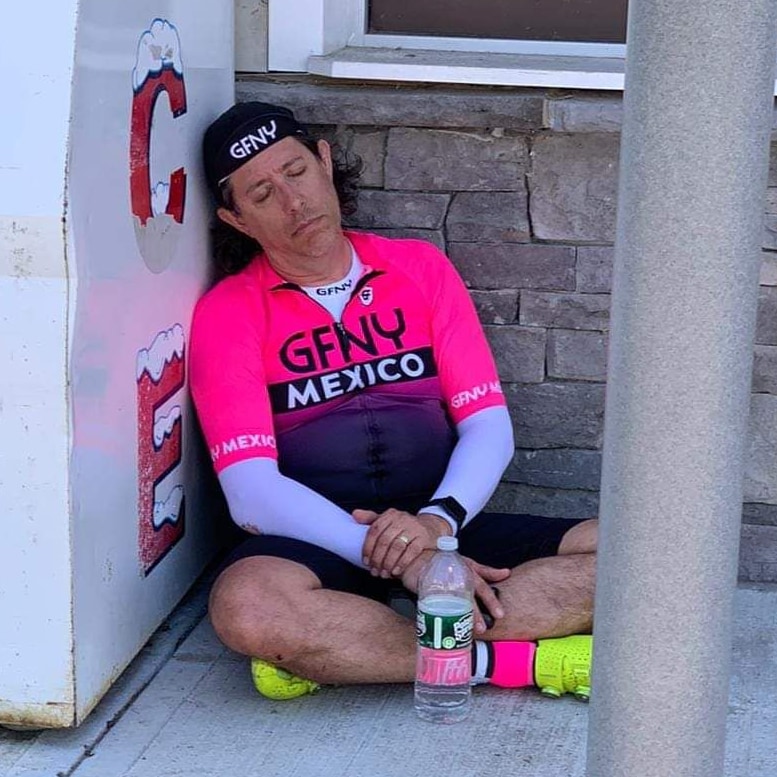
When 2022 Arrived
When it was finally looking like this event would happen in 2022 and the season began, I was ready to commit to training and weight loss. Happily, I had actually lost weight during the pandemic, but I had also lost fitness with my FTP down near 200w. Honestly, that would still be plenty of power output for the 1200k, I just might be slower and no longer middle of the pack. But that said, I wanted to get back to “fighting strength” anyway.
Well, this was not in the cards, and in February I compressed a nerve in my lower back leading to weakness and numbness in my left leg. Right around this time I added power meters to my bike and when I started riding after the injury, my FTP was about 125w and my power balance was 40/60. I knew I needed to get my balance back to parity and also increase my FTP.
Through physical therapy, I was able to get my balance back to parity, but overall power was still low and some of reaching parity was atrophy in the right leg. By now the brevet season was in full swing and I finished all my events, but my times were really slow. I figured this would be OK for the 1200k, but I soon learned a valuable lesson.
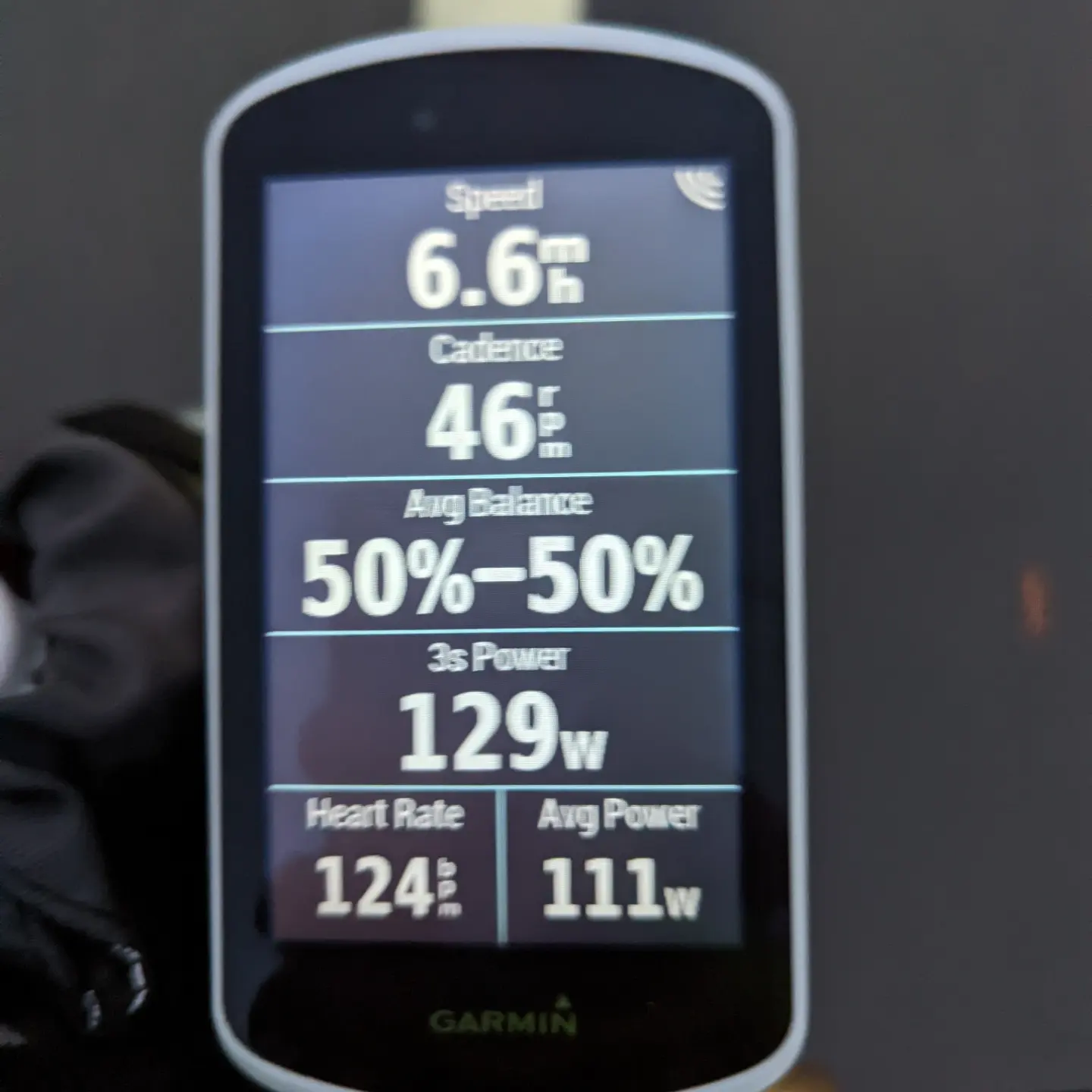
The Need For Sleep
Until July, I’d done lost of brevets, but no overnight events until Nik and I attempted a 600k on our own. We ultimately road on two of the hottest days of the heat wave and then I suffered a broken shifter cable that forced us to abandon about 75% through the ride. We clearly could have finished, but we would have been riding through Yonkers and The Bronx after midnight and didn’t want to deal with that at the end of the ride. However, even with limited sleep, I felt pretty good and likely would have finished if not for the mechanical.
What I would soon learn on the 1200k is how quickly sleep deficits pile on. While I could get away with limited sleep one night, by day 3, I was a wreck. This is ultimately what thwarted my 1200k attempt. However, it was a combination of small things that added up quietly driving this result.
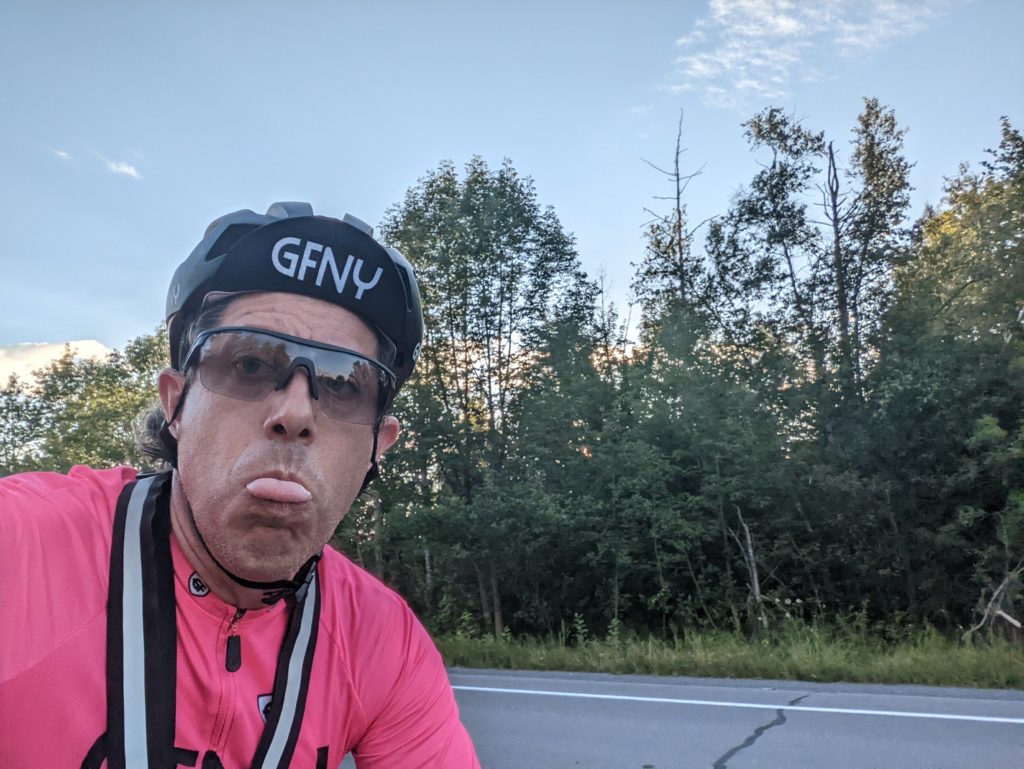
The Thousand Cuts
Before I summarize the event, here’s my take on the Thousand Cuts that resulted in my DNF:
- Pandemic decrease in overall fitness
- Post-injury decrease in sustained powered
- Increase in weight
- (Resulting in) Decreased pace (and increased time on the road)
- Lack of climbing strength
- Minor crash on first day leading to some added (minor) discomfort
- Inability to get adequate sleep
Basically, while I could finish each day, I was too slow to finish in time for decent sleep and the sleep deficit quickly added up. On the third morning, I awoke feeling drunk and made the wise decision not to continue. That fog only cleared about 4-5 hours later, so it was clear I made the right decision.

Despite My DNF, I Loved This Event!
The most important thing to me going in was to take on an epic challenge and have fun doing it. In this regard, it was a complete success! The course was well plotted, sleep stops incredibly well supported, and “surprise” volunteers showed up at many unsupported controls. Plus the aforementioned camaraderie and this event was absolutely perfect.
My accomplishments were as follows:
- Longest Event: 725km (450 miles) in two days
- Most Elevation: ~21k feet (nearly the summit of Everest)
- Longest Day: 22 hours and 5 minutes on the road for day two (over 228 miles)
- Knowing When To Stop (versus when to simply push through)
I’m incredibly humbled to have participated in this event with such incredible riders, and incredible humans. The goodwill between riders was truly spectacular and meeting these people is what makes these difficult challenges that much more enjoyable. And despite not completing this particular challenge, I’m proud to be a Randonneur!
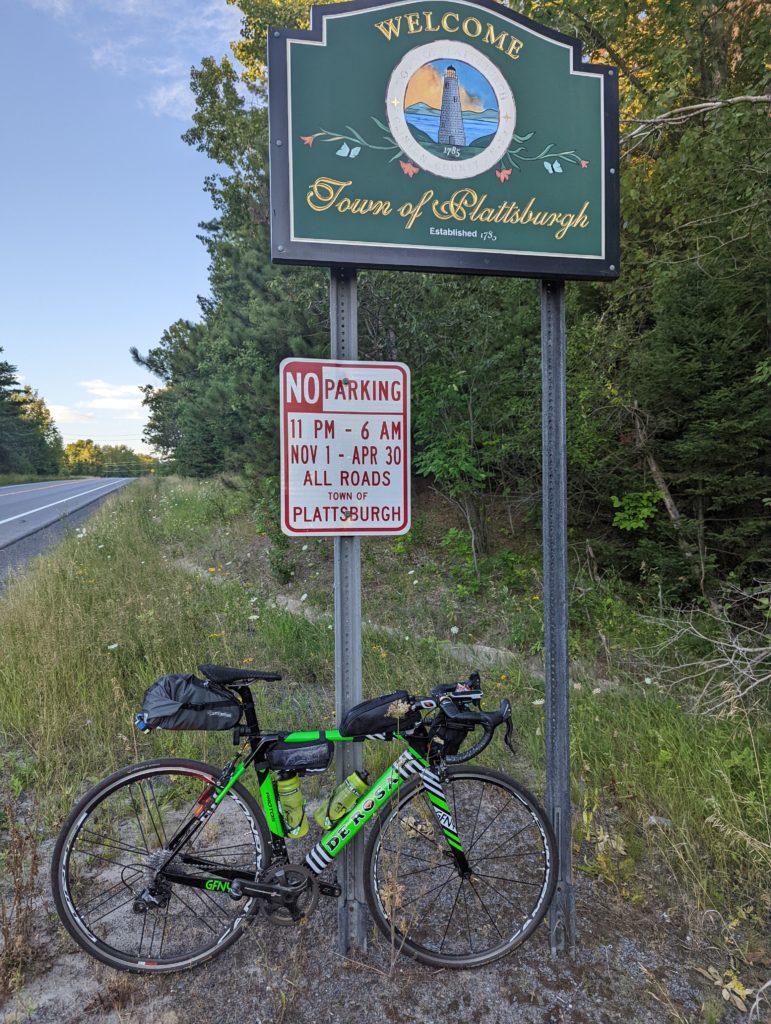
Would I Do It Again?
Yes and no.
Starting with the NO – I don’t want to take time away from friends and family to train like I did this year. However, that’s the only NO, so we’ll see how future seasons progress. If I’m training well overall, avoiding injuries, and getting back to better sustained power, maybe I could try this again.
In the meantime, I seem to be well suited to 600k events and may focus on those. I also didn’t get my SR this year because I didn’t complete a 600k, so that’s a goal for next year. I could find a 600k still this year, but my calendar may not allow it. Oh well.
Either way, I’ll continue to ride long rides, challenge myself, and meet great people along the way. Isn’t that really what this is all about, anyway?!?
